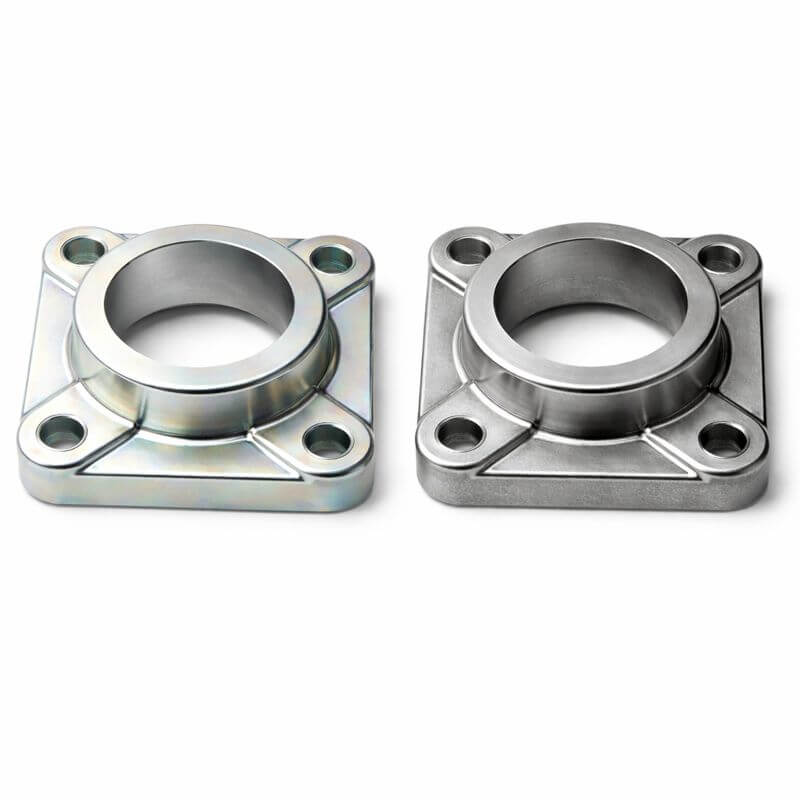2 min read
Young’s Modulus: What It Is, How It’s Calculated and Why It Matters
Young’s modulus, also known as the longitudinal modulus of elasticity, is one of the most important mechanical properties of materials. It is used...
3 min read
![]() Weerg staff
:
Aug 5, 2024
Weerg staff
:
Aug 5, 2024

3D printing is revolutionising production, offering new opportunities to improve environmental sustainability. By using eco-friendly 3D printing materials and advanced techniques, it is possible to significantly reduce the environmental impact. This article explores how 3D printing can contribute to sustainability, focusing on sustainable 3D printing materials and strategies to reduce CO2 emissions.
One of the most important aspects of 3D printing sustainability is the use of eco-friendly 3D printing materials. Notably, PA11 and ECOtech stand out for their sustainable properties.
Nylon PA11 is a bio-based material derived from renewable resources such as castor oil. This makes it a more eco-friendly 3D printing alternative compared to traditional thermoplastics, which depend on non-renewable petroleum sources. Castor grows on marginal lands, does not compete with food crops, and requires minimal water due to natural monsoons. Additionally, castor farming is profitable for 700,000 farmers, supporting local economies.
In the production process with HP MJF technology, PA11 is efficiently reused, minimizing waste and optimising resource utilisation. This material also offers high chemical and mechanical resistance while maintaining good flexibility, making it ideal for a wide range of industrial applications. The combination of sustainability and performance makes it a preferred choice for those seeking reliable green 3D printing solutions.
ECOtech is designed for high-performance and green 3D printing applications. It is biodegradable according to DIN EN ISO 14855 standards, meaning it can naturally degrade over time, reducing its environmental impact and contributing to a more sustainable future. This makes it an ideal choice for balancing performance with eco-friendliness.
ECOtech's high-performance properties include notable strength and durability, comparable to traditional thermoplastics. However, its main advantage is its biodegradability, offering a practical solution to reduce plastic waste and environmental impact. The use of ECOtech in 3D printing demonstrates how advanced materials can be combined with a commitment to sustainability.
In addition to PA11, other sustainable 3D printing materials like PA12, PA12 GB, PP, PA12 white, and TPU have reduced their environmental impact. For example, nylon PA 12 has seen a 49% reduction in its carbon footprint compared to the previous version, thanks to the use of renewable energy. This shows how adopting renewable energy in material production can significantly impact sustainability.


Another pillar of sustainable 3D printing is reducing CO2 emissions. Increasing the reuse rate of printing powder from 50% to 80% can reduce the carbon footprint of a printed part by 70%. Additionally, materials like PP, with a 90% reuse rate, offer further emissions reduction due to lower energy requirements for production.
Life cycle analysis (LCA) of materials reveals that sustainability depends not only on resource sources but also on production conditions. Plant-based materials like PA11 tend to have a significantly lower carbon footprint than fossil-based materials. TPU, with its low energy consumption during printing, emerges as one of the materials with the least environmental impact.
3D printing not only allows the use of eco-friendly 3D printing materials but also optimizes production processes. The ability to design lightweight parts and consolidate multiple components into one significantly reduces costs, weight, and energy consumption. A practical example is the redesign of a part that, thanks to 3D printing, reduced CO2 emissions by 38%, costs by 95%, and weight by 90%.
Eco-friendly 3D printing represents a significant shift towards more sustainable production. By using sustainable 3D printing materials and adopting optimized production techniques, it is possible to significantly reduce the environmental impact. Integrating 3D printing with renewable energy and advanced recycling practices is a fundamental step towards green industrial production. Adopting these technologies not only promotes sustainability but also offers long-term economic and competitive advantages.

2 min read
Young’s modulus, also known as the longitudinal modulus of elasticity, is one of the most important mechanical properties of materials. It is used...

3 min read
Galvanisation is one of the most effective and widely used surface treatments for protecting steel and other metals from corrosion, oxidation and...

2 min read
VALOI, a brand of the Finnish company Kameratori Oy and specialised in film-digitalisation systems for the home market, has started a collaboration...